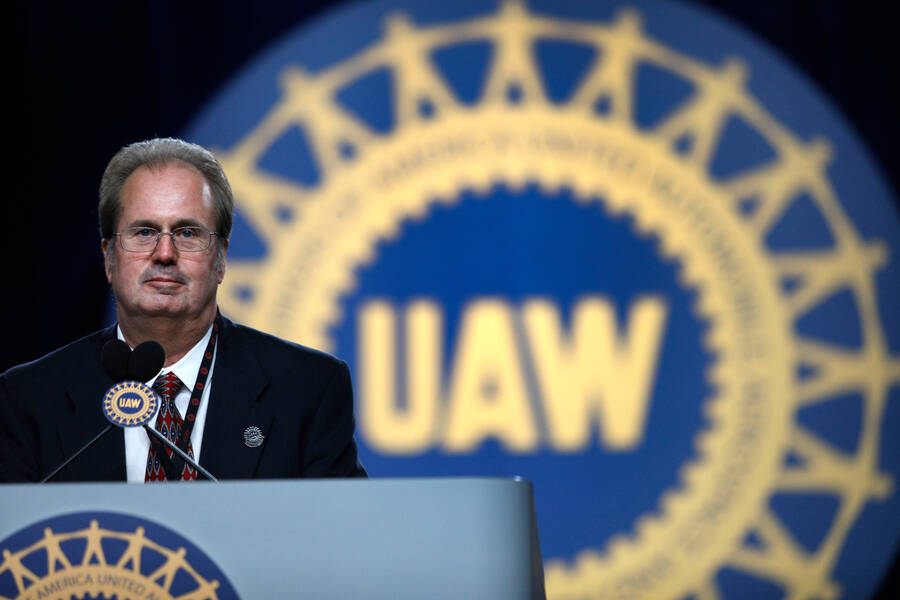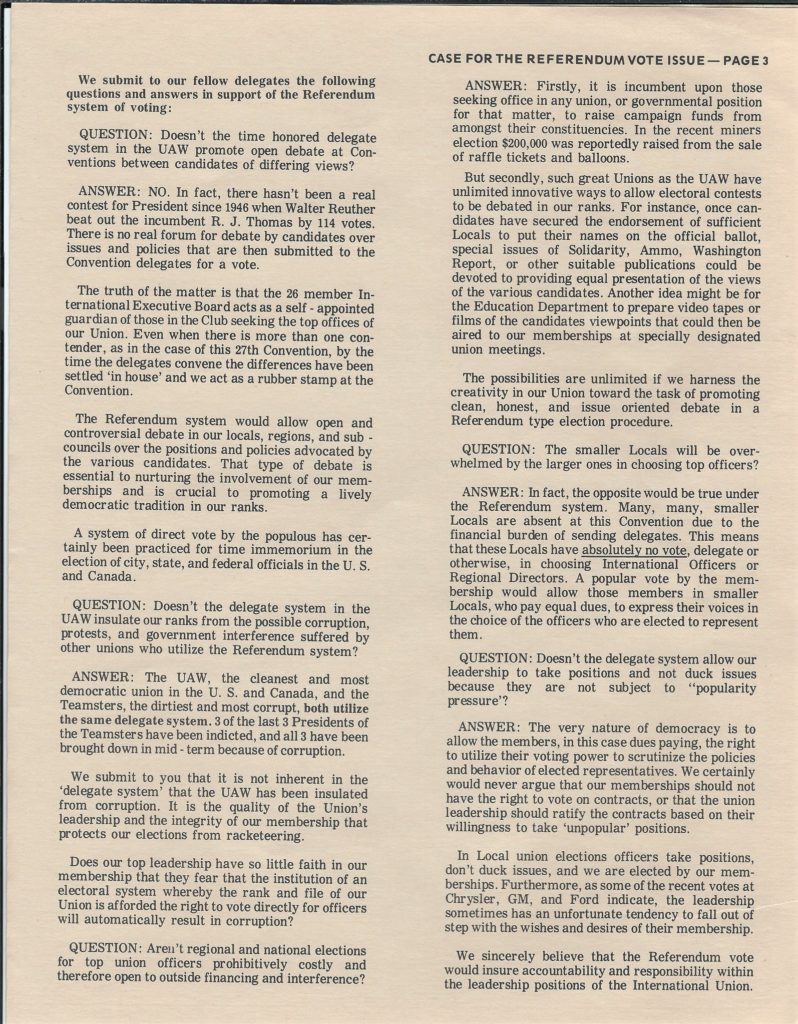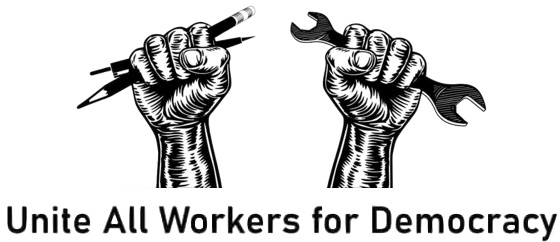WOULD A ONE MEMBER ONE VOTE SYSTEM OF ELECTING OUR UAW INTERNATIONAL OFFICERS DISENFRANCHISE SMALLER LOCALS?
Given the upcoming UAW membership referendum vote sometime later this year, I thought we should talk about One Member One Vote. More specifically, lets address a common critique of the One Member One Vote system of electing our UAW International Officers — that smaller Locals would be disenfranchised under One Member One Vote as opposed to our current Convention delegate system.
This is a criticism of One Member One Vote that I hear quite often, but I think that if we take a deeper look we’ll find that this particular critique doesn’t hold much weight, particularly in comparison to the system we are currently utilizing in the UAW.
Under the UAW’s current system of electing our International Officers, the membership from each Local votes for delegate representatives from their Local. These elected delegates in turn vote for our International Executive Board officers at the Constitutional Convention — held every four years.
The number of delegates each Local is allocated is based on the total number of members within that Local — although the formula is not a straightforward equation by any means. How delegates are proportioned under our current system is actually quite complicated. The formula can be found in the UAW Constitution under Article 8. For example, here is section 5 of Article 8:
“Each Local Union shall have one (1) delegate for two hundred (200) members or less and one (1) additional delegate for the next three hundred (members) or major fraction thereof, and one (1) additional delegate for each additional eight hundred (800) members or major fraction thereof, except Amalgamated (Local unions combined together to form one Local union) Local Unions which elects as many delegates as they have units who average two hundred (200) dues-paying members or more, and that those units who have two hundred (200) members or more may elect their own delegates to the Convention and those with less than two hundred (200) shall be grouped together and vote as a miscellaneous group. In the event the miscellaneous group within the Amalgamated Local Union has less than two hundred (200), the International Secretary-Treasurer shall allocate such membership to some other unit of the Local Union in such a manner as will result in the maximum number of delegates.”
Read that paragraph as many times as you need to in order to understand exactly how it works. Don’t worry if you don’t get it the first few times you read through it — it’s extremely confusing!
In 2018, UAW Local 31 — my Local — elected five delegates to attend the Constitutional Convention in June of that same year. Those five Local 31 delegates voted on various issues regarding the future of the UAW, including a vote for our International Executive Board officers. In short — five members of Local 31 represented the interests of roughly 1,800 Local 31 members at the Convention.
For the sake of comparison, Local 600 located in Dearborn, Michigan — with a membership of 25,000 — sent 34 delegates to the 2018 Convention. If we are to assess the delegate system from the critique that One Member One Vote would disenfranchise smaller Locals, think of it this way: under our current system the delegates of Local 600 alone have more power in determining IEB elections than if you combined 33 other Locals. Isn’t this disparity in representation disenfranchising the smaller Locals in our union?

166 Locals that attended the 2018 Constitutional Convention had only 1 delegate each representing them. Furthermore, 225 Locals did not or were not able to send delegates to be represented at the 2018 Constitutional Convention. This is roughly 11% of the UAW’s membership that did not attend our last Convention. Often, this was because those Locals — almost always smaller Locals — could not afford to send their delegate representative(s) to the Convention, due to meager funds and the expenses associated with sending delegates to Detroit.
Of the 191 Locals that did not attend the convention for which I was able to find membership totals for on the Office of Labor-Management Standards website, the average membership total of each Local was 129 members.
Is it any coincidence that the vast majority of these 191 Locals that did not attend the 2018 Convention were Locals averaging only 129 members?
This problem of smaller Locals being disenfranchised goes back through much of the UAW’s history. In Jack Stieber’s 1962 book, Governing the UAW, he explains:
The 1959 convention was attended by 2,527 delegates from 967 UAW local unions. An additional 282 local unions — 23 percent of the total — did not send delegates, presumably because they could not afford to incur the necessary expenses. These were all small locals — 75 percent had fewer than one hundred members and only two had more than one thousand members.
A UAW Local 72 One Member One Vote pamphlet from all the way back in 1983 addressed the question of smaller Locals potentially being overwhelmed by the larger ones in choosing top officers under a One Member One Vote system:
“In fact, the opposite would be true under the Referendum (OMOV) system. Many, many smaller Locals are absent at this Convention (1983) due to the financial burden of sending delegates. This means that the Locals have absolutely no vote, delegate or otherwise, in choosing International Officers or Regional Directors. A popular vote by the membership would allow those members in smaller Locals, who pay equal dues, to express their voices in the choice of the officers who are elected to represent them.”

Under a One Member One Vote system, every member in good standing in the UAW would have a vote for the officers of our International Executive Board. So, at Local 31, where we have 1,800 members, each of those 1,800 would have their own individual vote.
In a June 2020 Labor Notes interview with Teamsters for a Democratic Union (TDU) National Organizer, Ken Paff, I asked if the One Member One Vote system of electing International officers had disenfranchised smaller Locals within the Teamsters since its implementation in 1989. Said Paff: “Direct elections do not disadvantage small locals in the Teamsters. In fact, there have been many cases where small locals have had a huge impact. For example, during our 2016 Teamster elections, Local 19 in Texas had 75 votes for James Hoffa and 602 votes for Fred Zuckerman. So Zuckerman emerged from that Local with a 527 vote lead over Hoffa. In Local 988 in Houston, Hoffa got 542 votes and Zuckerman got 302, so Zuckerman lost there by 240 votes. Local 988 is more than twice as big as Local 19, but Local 19 had more impact on the election due to the turnout and the margin of how many more votes one person got over another.”
As historian Nelson Lichtenstein wrote in an article earlier this year, “referendum election (direct election) of top officers is not a panacea”, and that is definitely true. No system is perfect and no system is a cure-all for what has gone wrong within the UAW. The rank-and-file must become more involved in the day-to-day affairs of our union if we want more democracy and accountability from those who represent us. But, in my opinion, there is no doubt that One Member One Vote is a more democratic system of electing our International officers, and would allow for every member’s voice to be equally heard. And if our leadership is supposed to represent the interests of our membership, I don’t see how more rank-and-file democracy is a bad thing.
In Solidarity,
Justin Mayhugh
UAWD Co-Chair
